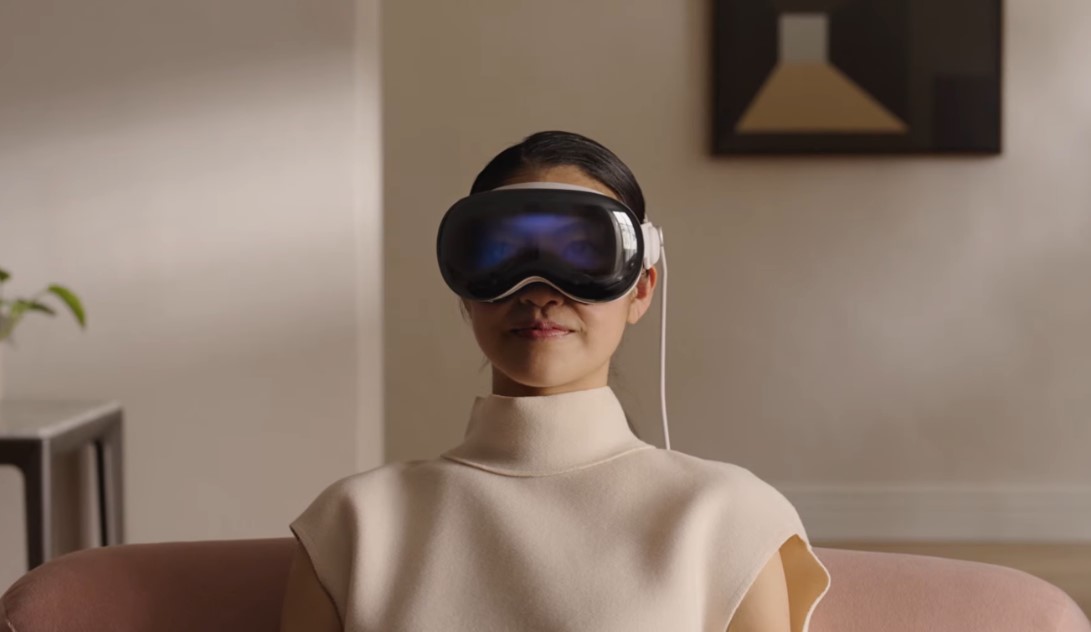Apple has unveiled its first spatial computer, the Apple Vision Pro, which is a wearable device that seamlessly blends digital content with the physical world. The device, which was first announced at WWDC 2023, is expected to launch in February 2024 and will offer a new way of interacting with apps, media, and people. The device features a three-dimensional user interface, a high-resolution display system, and a custom Apple silicon chip. The device also runs on visionOS, the world’s first spatial operating system, which is built on the foundation of macOS, iOS, and iPadOS.

What is a Spatial Computer?
A spatial computer is a device that can create and manipulate digital content in three dimensions, and overlay it on the real world. Unlike a traditional computer, which is limited by the boundaries of a screen, a spatial computer can create an infinite canvas for apps and experiences, and allow users to interact with them using their eyes, hands, and voice. A spatial computer can also sense the environment and the user’s position, and adjust the content accordingly. A spatial computer can create immersive and realistic experiences, as well as enhance the user’s perception and creativity.
How Does Apple Vision Pro Work?
Apple Vision Pro is a standalone spatial computer that can be worn like a pair of glasses. The device has a sleek and lightweight design, weighing only 200 grams. The device has two displays, one for each eye, that can project 23 million pixels across a 110-degree field of view. The device also has a dual-chip design, which consists of a vision chip and a neural engine. The vision chip handles the graphics, display, and sensor processing, while the neural engine handles the machine learning, computer vision, and spatial audio. The device also has a digital crown, which can be used to adjust the settings and control the level of immersion.
The device runs on visionOS, which is the world’s first spatial operating system. visionOS features a three-dimensional user interface, which can be controlled by the user’s eyes, hands, and voice. The user can look at apps to open them, tap their fingers to select, flick their wrist to scroll, or use a virtual keyboard or dictation to type. The user can also use Siri to perform various tasks, such as opening or closing apps, playing media, and more. visionOS also features Environments, which are dynamic and beautiful landscapes that can be used as backgrounds for the apps and experiences. The user can choose from various environments, such as national parks, cities, and even the moon, and adjust the level of immersion using the digital crown.
What Can Apple Vision Pro Do?
Apple Vision Pro can do a lot of things that a traditional computer or a smartphone can do, but in a more immersive and intuitive way. The device can run more than 1 million compatible apps across iOS and iPadOS, as well as new apps that take advantage of the spatial capabilities of the device. The device can also connect to other Apple devices, such as the iPhone, iPad, Mac, Apple Watch, and AirPods, and use them as accessories or extensions. Some of the things that the device can do are:
- Work and productivity: The device can create an infinite workspace, where the user can access their favorite apps, documents, and files, and arrange them in any way they want. The device can also support Magic Keyboard and Magic Trackpad, which can be used to type and navigate the apps. The device can also connect to the Mac wirelessly, and use it as a huge, private, and portable 4K display.
- Entertainment and media: The device can play movies, TV shows, music, podcasts, and more, in stunning quality and spatial audio. The device can also create a virtual cinema, where the user can watch content on a giant screen, with surround sound and ambient lighting. The device can also play games, both casual and immersive, and use the user’s hands and body as controllers.
- Social and communication: The device can make FaceTime calls, and create a virtual presence of the user and their contacts, using realistic avatars and expressions. The device can also share the user’s view and experiences with others, and join them in various activities, such as watching a movie, playing a game, or exploring an environment.
- Education and learning: The device can create interactive and engaging learning experiences, using augmented reality and virtual reality. The device can also access various educational apps and content, such as books, podcasts, videos, and courses, and learn from them in a more immersive way.
- Creativity and expression: The device can unleash the user’s creativity and imagination, by allowing them to create and manipulate digital content in three dimensions. The device can also access various creative apps and tools, such as GarageBand, iMovie, Procreate, and Photoshop, and use them in a more intuitive way.
How to Get Apple Vision Pro?
Apple Vision Pro will be available in the U.S. on February 2, 2024, at all Apple Store locations and the Apple Store online. The device will cost $1,999 for the base model, which has 128 GB of storage, and $2,499 for the higher-end model, which has 256 GB of storage. The device will also come with a one-year subscription to Apple One, which includes Apple Music, Apple TV+, Apple Arcade, Apple News+, Apple Fitness+, and iCloud. The device will also be compatible with Apple Care+, which will offer extended warranty and accidental damage coverage.
Apple Vision Pro is a device that will redefine computing and create a new era of spatial experiences. The device will offer a new way of interacting with apps, media, and people, and will enhance the user’s perception and creativity. The device will also be a showcase of Apple’s innovation and vision, and will set a new standard for consumer electronics.
